Easiest trailing house plants bring a touch of nature and elegance to your home, adding a touch of greenery to any corner. From cascading pothos to trailing ivy, these versatile plants offer endless possibilities for creating a lush and inviting ambiance.
In this comprehensive guide, we will explore the most popular trailing houseplants, their unique characteristics, and how to choose the perfect ones for your space. We will also provide tips on creating stunning arrangements and troubleshooting common problems, ensuring your trailing houseplants thrive and bring joy for years to come.
Identifying the Most Popular Easiest Trailing Houseplants
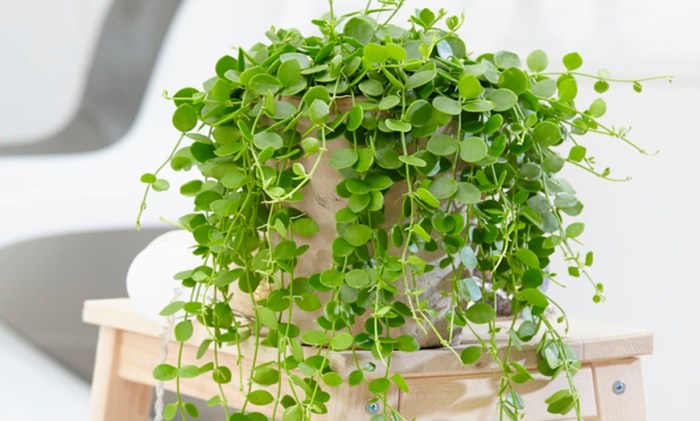
Trailing houseplants are a popular choice for home décor due to their ability to add a touch of greenery and elegance to any space. They are relatively easy to care for, making them a great option for both experienced and novice plant owners.
Here is a list of the 10 most popular trailing houseplants:
Pothos
- Common Name: Pothos
- Scientific Name: Epipremnum aureum
- Origin: Solomon Islands
- Notable Characteristics: Pothos is a fast-growing vine with heart-shaped leaves that come in a variety of colors, including green, yellow, and white. It is a very tolerant plant that can thrive in a wide range of conditions.
Philodendron
- Common Name: Philodendron
- Scientific Name: Philodendron scandens
- Origin: Central and South America
- Notable Characteristics: Philodendron is a large genus of plants with over 400 species. They typically have large, glossy leaves that come in a variety of shapes and colors. Philodendrons are relatively easy to care for, but they do require more light than pothos.
Spider Plant
- Common Name: Spider Plant
- Scientific Name: Chlorophytum comosum
- Origin: South Africa
- Notable Characteristics: Spider plants are a popular choice for hanging baskets due to their long, trailing stems. They have long, narrow leaves that come in a variety of colors, including green, white, and yellow. Spider plants are very easy to care for and are a great option for beginners.
ZZ Plant
- Common Name: ZZ Plant
- Scientific Name: Zamioculcas zamiifolia
- Origin: East Africa
- Notable Characteristics: ZZ plants are a very low-maintenance plant that can tolerate a wide range of conditions. They have thick, glossy leaves that come in a deep green color. ZZ plants are a great option for people who do not have a lot of time to care for plants.
Snake Plant
- Common Name: Snake Plant
- Scientific Name: Sansevieria trifasciata
- Origin: West Africa
- Notable Characteristics: Snake plants are a very popular choice for home décor due to their striking appearance. They have long, pointed leaves that come in a variety of colors, including green, yellow, and white. Snake plants are very easy to care for and can tolerate a wide range of conditions.
Peperomia, Easiest trailing house plants
- Common Name: Peperomia
- Scientific Name: Peperomia obtusifolia
- Origin: South America
- Notable Characteristics: Peperomias are a large genus of plants with over 1000 species. They typically have small, round leaves that come in a variety of colors, including green, red, and purple. Peperomias are relatively easy to care for, but they do require more humidity than some other trailing houseplants.
String of Hearts
- Common Name: String of Hearts
- Scientific Name: Ceropegia woodii
- Origin: South Africa
- Notable Characteristics: String of Hearts is a trailing plant with heart-shaped leaves that come in a deep green color. It is a relatively easy-to-care-for plant, but it does require more light than some other trailing houseplants.
String of Pearls
- Common Name: String of Pearls
- Scientific Name: Senecio rowleyanus
- Origin: South Africa
- Notable Characteristics: String of Pearls is a trailing plant with small, round leaves that resemble pearls. It is a relatively easy-to-care-for plant, but it does require more light than some other trailing houseplants.
Burro’s Tail
- Common Name: Burro’s Tail
- Scientific Name: Sedum morganianum
- Origin: Mexico
- Notable Characteristics: Burro’s Tail is a trailing plant with long, fleshy stems that resemble a burro’s tail. It is a relatively easy-to-care-for plant, but it does require more light than some other trailing houseplants.
Tradescantia
- Common Name: Tradescantia
- Scientific Name: Tradescantia zebrina
- Origin: Mexico
- Notable Characteristics: Tradescantia is a trailing plant with long, narrow leaves that come in a variety of colors, including green, purple, and silver. It is a very easy-to-care-for plant and is a great option for beginners.
Factors to Consider When Choosing a Trailing Houseplant
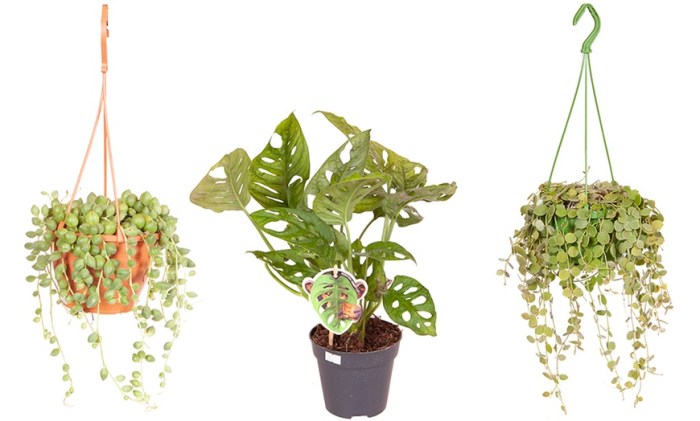
When selecting a trailing houseplant, it is essential to consider several factors to ensure its success and compatibility with your environment and care routine.
Light Requirements
Different trailing houseplants have varying light requirements. Some thrive in bright, indirect light, while others prefer shaded areas. Determine the amount of natural light available in the intended location and choose a plant that suits those conditions.
Trailing house plants are a great way to add a touch of greenery to your home without taking up too much space. They’re also relatively easy to care for, making them a good choice for beginners. If you’re looking for a trailing plant to add to your collection, you may want to consider Hanging Plants . These plants are known for their long, trailing vines that can add a touch of drama to any room.
They’re also relatively easy to care for, making them a good choice for beginners.
Watering Needs
Trailing houseplants have diverse watering needs. Some, like spider plants, are drought-tolerant and can survive with occasional watering. Others, like ferns, require regular watering to maintain their lush foliage.
Growth Habits
Trailing houseplants come in various growth habits. Some, like ivy, grow rapidly and can quickly fill a space. Others, like string of pearls, have a slower growth rate and may take longer to establish.
Potential Challenges
Growing trailing houseplants may present certain challenges. These include:
- Overwatering:Trailing houseplants are susceptible to overwatering, which can lead to root rot.
- Pests:Some trailing houseplants, like spider plants, are prone to infestations by spider mites and aphids.
- Low humidity:Trailing houseplants originating from humid environments may struggle in drier conditions.
By carefully considering these factors, you can select a trailing houseplant that will thrive in your home environment and bring joy to your living space.
Benefits of Trailing Houseplants in Home Decor: Easiest Trailing House Plants
Trailing houseplants have become increasingly popular in home decor due to their aesthetic appeal and versatility. Their long, flowing stems and lush foliage can transform any room, adding a touch of greenery and creating a sense of tranquility.
Vertical Gardens
Trailing houseplants are ideal for creating vertical gardens, which are a great way to maximize space and bring nature indoors. By training their stems upwards using trellises or hanging baskets, you can create a lush green wall that adds depth and interest to any room.
Easiest trailing house plants are a popular choice for home decorators. They add a touch of greenery and can be used to create a variety of looks. For those who prefer low-maintenance plants, 5 Draping Indoor Plants for Low Light: Beautify Your Space with Minimal Effort offers a great selection of options.
These plants are easy to care for and can tolerate low light conditions. Whether you’re looking for a plant to add to your living room or bedroom, trailing house plants are a great choice.
Filling Empty Spaces
Trailing houseplants are also excellent for filling empty spaces in your home. They can be placed on shelves, tables, or windowsills to add a touch of greenery and life to otherwise bare areas. Their long stems can gracefully cascade over the edges, creating a beautiful and inviting atmosphere.
Greenery in Any Corner
One of the biggest benefits of trailing houseplants is their ability to bring a touch of greenery to any corner of your home. Whether you have a small apartment or a large house, there’s always a spot where a trailing houseplant can thrive.
Their versatility makes them suitable for any decor style, from bohemian to modern to rustic.
Trailing house plants are a great way to add life and greenery to your home, and they’re especially well-suited for small spaces. If you’re looking for a way to add some vertical interest to your walls, consider using DIY indoor wall planters.
There are many different ways to make your own wall planters, so you can find one that fits your style and needs. For some inspiration, check out 5 DIY Indoor Wall Planters to Bring Life to Your Walls . These planters are easy to make and can be customized to fit any space.
Plus, they’re a great way to show off your favorite trailing house plants.
Creating a Trailing Houseplant Arrangement
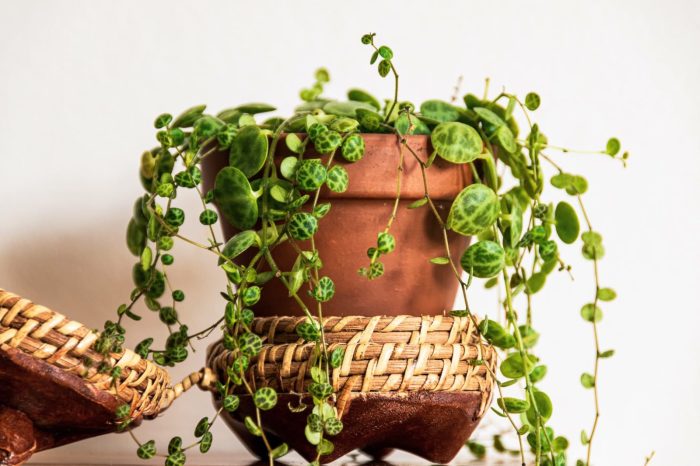
Creating a visually appealing arrangement using multiple trailing houseplants requires careful consideration of plant placement, color combinations, and container selection. By following these principles, you can create a lush and vibrant display that will add a touch of elegance and greenery to your home.
Trailing house plants are a great way to add life and greenery to your home, and they’re especially easy to care for. If you’re looking for a way to create a lush indoor oasis, consider adding some drape plants to your collection.
These plants are known for their long, flowing stems that can cascade over the sides of pots or baskets. In our article 5 Drape Plants for a Lush Indoor Oasis , we’ll introduce you to some of the easiest trailing house plants that are perfect for beginners.
Plant Placement
When arranging trailing houseplants, it’s important to consider their growth habits and cascading nature. Place plants with longer vines in the center or at the back of the arrangement, allowing them to gracefully cascade over the sides of the container.
Shorter plants or those with bushier growth can be placed in the front or around the edges to fill in gaps and create a more balanced look.
Color Combinations
The color combinations you choose can significantly impact the overall aesthetic of your arrangement. Consider using plants with contrasting foliage colors to create a dynamic display. For example, pair deep green ferns with variegated ivies or golden pothos. Alternatively, you can create a monochromatic arrangement by using plants with different shades of the same color, such as various hues of green or purple.
Container Selection
The type of container you choose will depend on the size and number of plants you’re using. Opt for a container with drainage holes to prevent waterlogging and root rot. Consider the overall style of your arrangement and choose a container that complements the plants and your home decor.
For example, a rustic wooden planter would be a suitable choice for a collection of trailing succulents, while a sleek ceramic pot would be more appropriate for a group of variegated ivies.
Troubleshooting Common Problems with Trailing Houseplants
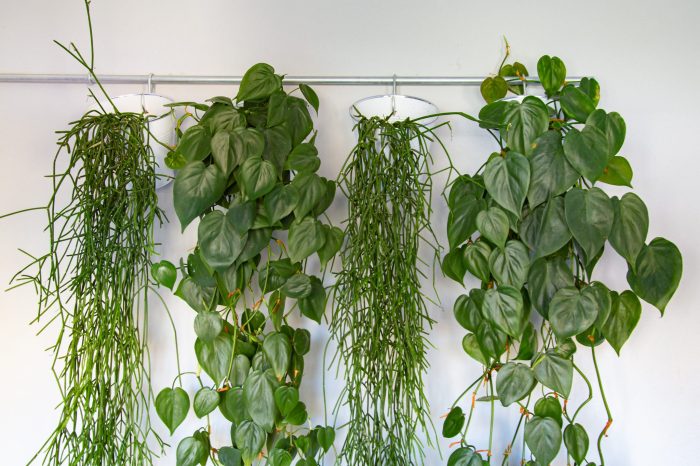
Trailing houseplants are generally low-maintenance, but they can encounter occasional issues. Identifying and addressing these problems promptly can ensure healthy and thriving plants.
Yellowing Leaves
Yellowing leaves can indicate various issues, including overwatering, underwatering, nutrient deficiencies, or pests. Overwatering can lead to root rot, while underwatering causes dehydration and yellowing. Nutrient deficiencies, particularly nitrogen deficiency, can also result in yellowing. Pests, such as aphids or spider mites, can suck sap from leaves, causing yellowing and leaf drop.
Stunted Growth
Stunted growth can be caused by inadequate light, lack of nutrients, or rootbound conditions. Trailing houseplants require bright indirect light to thrive. Nutrient deficiencies, especially nitrogen and phosphorus, can limit growth. Rootbound plants become pot-bound, restricting root growth and nutrient uptake.
Pests
Common pests that affect trailing houseplants include aphids, spider mites, mealybugs, and scale. Aphids and spider mites are tiny insects that feed on plant sap, causing yellowing and leaf drop. Mealybugs and scale are small, soft-bodied insects that attach themselves to stems and leaves, sucking sap and leaving behind a sticky residue.
Importance of Regular Maintenance and Proper Care
Regular maintenance and proper care are crucial for preventing and addressing problems with trailing houseplants. Watering should be done when the soil feels slightly dry to the touch, avoiding overwatering or underwatering. Fertilizing monthly during the growing season provides essential nutrients.
Repotting when the plant becomes rootbound ensures adequate space for root growth. Pest infestations can be controlled through regular inspections and prompt treatment with insecticidal soap or neem oil.
Ultimate Conclusion
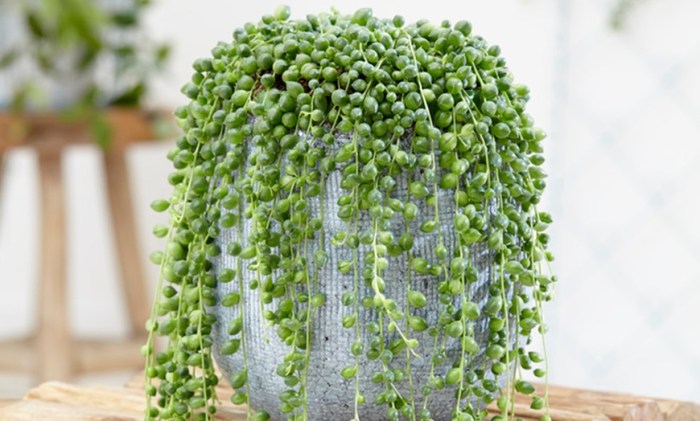
Whether you’re a seasoned plant enthusiast or just starting your green journey, easiest trailing house plants are a fantastic choice for adding life and beauty to your home. With their diverse range of colors, textures, and growth habits, these plants offer endless possibilities for creating a unique and inviting living space.
Detailed FAQs
What are the most popular trailing houseplants?
Some of the most popular trailing houseplants include pothos, ivy, spider plants, and philodendrons.
How do I choose the right trailing houseplant for my space?
Consider factors such as light requirements, watering needs, and growth habits when selecting a trailing houseplant. Choose plants that suit your environment and care level.
How can I create a stunning trailing houseplant arrangement?
Experiment with different plant combinations, colors, and container styles to create a visually appealing arrangement. Consider the principles of plant placement, color theory, and container selection.